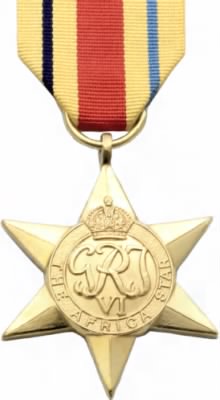FormerHorseGuard
Sr. Member
- Reaction score
- 437
- Points
- 760
Has anyone here ever donated medals, flight log books, etc to a local museum?
My grandfather was Air Force in the Second World War ( flying Officer RCAF ) , then Navy Reserve after the war as he went to college, then rejoined the Army as an Officer in the RCOC, was lied to when he joined there was talk about the army needing pilots and navigators because they were getting their own aircraft. He would of gone back to the Air Force, but he saw this as a faster way to promotions. But did not happen. Retired as a Captain in 1969.
He would of been 102 yesterday had he lived ( died in Feb 1988)
I am the last of the line so to speak. Outside of me there will be little to no interest in his medals, or his Second World War flight logs, ( he was shot down over the Burma Hump and made it back to the RAF ). I do not think my children will have any serious interest because they never met the man, or even know about him.
My Grandfather came from a very small town in Manitoba and they have a museum, I called them and they have interest in the medals and such.
Donating or long term loan of his medals to the local museum sound like a good solution ? They are not anything exciting. The 3 victory medals, that everyone got, then there is the Burma Star, North Africa with 2nd clasp, and the Italy ( if I recall correctly, there are 3 Stars) plus various UN Medals, Congo, Cyprus, Egypt.
I would really dislike the idea the medals are tossed or sold once I am gone if there is no interest.
Flight log book shows every mission he flew, including training flights, and his last flight looking for a missing lancaster bomber off the East Coast.
Atlas with every flight and course marked.
Any thoughts on this? I kind of figure some of you have done this or have plans to do this. Any advice?
My grandfather was Air Force in the Second World War ( flying Officer RCAF ) , then Navy Reserve after the war as he went to college, then rejoined the Army as an Officer in the RCOC, was lied to when he joined there was talk about the army needing pilots and navigators because they were getting their own aircraft. He would of gone back to the Air Force, but he saw this as a faster way to promotions. But did not happen. Retired as a Captain in 1969.
He would of been 102 yesterday had he lived ( died in Feb 1988)
I am the last of the line so to speak. Outside of me there will be little to no interest in his medals, or his Second World War flight logs, ( he was shot down over the Burma Hump and made it back to the RAF ). I do not think my children will have any serious interest because they never met the man, or even know about him.
My Grandfather came from a very small town in Manitoba and they have a museum, I called them and they have interest in the medals and such.
Donating or long term loan of his medals to the local museum sound like a good solution ? They are not anything exciting. The 3 victory medals, that everyone got, then there is the Burma Star, North Africa with 2nd clasp, and the Italy ( if I recall correctly, there are 3 Stars) plus various UN Medals, Congo, Cyprus, Egypt.
I would really dislike the idea the medals are tossed or sold once I am gone if there is no interest.
Flight log book shows every mission he flew, including training flights, and his last flight looking for a missing lancaster bomber off the East Coast.
Atlas with every flight and course marked.
Any thoughts on this? I kind of figure some of you have done this or have plans to do this. Any advice?









